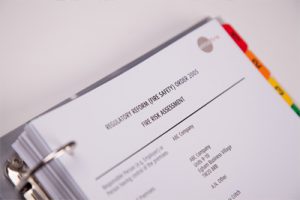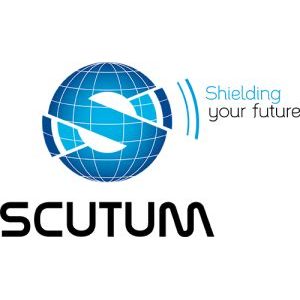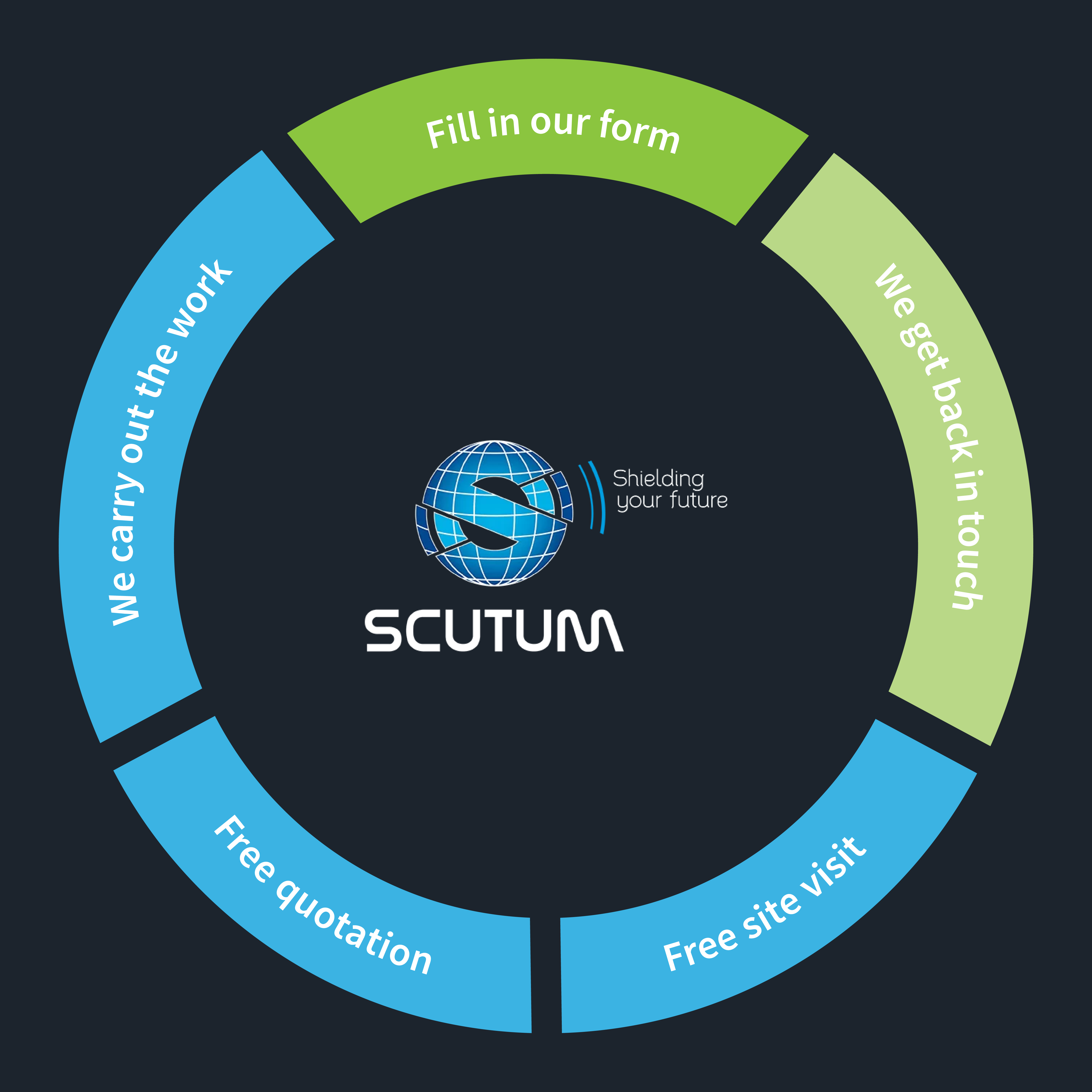Fire Risk Assessment Guide & Checklist for the Healthcare Industry
Fire Risk Assessment Checklist for Healthcare Industry
This guide has been specifically written for those that work in the healthcare industry or related environments, whether employers, employees, managers or owners.
The healthcare industry refers to those working in hospital environments, medical and dental practices and other healthcare premises, and the upkeep of fire safety standards is extremely important for all healthcare providers.
The following guide has been created to provide fire safety advice tailored to this industry with respect to universal regulations. It features a useful checklist to help ensure that each element of the fire risk assessment is carried out correctly in accordance with demands of the healthcare industry, as well as keeping your business in full compliance with the law.
The law
 All industries, whether the healthcare field or otherwise, are subject to the specifications of the Regulatory Reform (Fire Safety) Order 2005. Introduced as a comprehensive piece of legislation that pulled together the 70-or-so disparate pieces of fire safety law in the country before this point, and placing culpability for enforcing fire safety procedures firmly with employers, business owners and property managers.
All industries, whether the healthcare field or otherwise, are subject to the specifications of the Regulatory Reform (Fire Safety) Order 2005. Introduced as a comprehensive piece of legislation that pulled together the 70-or-so disparate pieces of fire safety law in the country before this point, and placing culpability for enforcing fire safety procedures firmly with employers, business owners and property managers.
The regulation states that a ‘responsible person’ must be assigned to handle all aspects of fire safety within the healthcare environment, and this individual is charged with protecting all employees, customers and visitors to the premises by performing regular fire risk assessments.
The risk assessment involves the identification and removal of hazards, installation and maintenance of detection and firefighting equipment (alarms, smoke detectors, extinguishers, blankets etc.), and ensuring that all staff are made aware of their responsibilities in the event or a fire.
In the healthcare industry, special dispensation must be made for the evacuation of those who might hold a physical disability, or could be suffering an illness that would prevent them from exiting a building via standard means.
Conducting a fire risk assessment – 5 steps
 In order to make the fire risk assessment as straightforward as possible, government recommendations break down the process into five steps to consider.
In order to make the fire risk assessment as straightforward as possible, government recommendations break down the process into five steps to consider.
It may also be useful, particularly in larger buildings, to separate different areas of the working environment (offices, treatment rooms, bathroom facilities, reception areas etc.) out and perform the five steps on each one.
#1 Identify the fire hazards
Within each of your separated areas, begin by slowly making your way round and carefully make a note of any fire hazards you encounter. Keep the fire triangle (the three elements that cause and sustain fire) in mind – ignition, fuel and oxygen.
#2 Identify people at risk
It is not just employees that are considered at risk; visitors to the healthcare facility are also your responsibility when it comes to fire safety. Special considerations must be made for those attending the premises with a physical disability or illness that impairs movement or sensory perception, as well as other vulnerable persons (the elderly, the very young).
#3 Evaluate, remove and reduce the risks
After collecting the information from steps one and two, the next stage is to act on those findings by reducing or removing any hazards encountered.
Fitting fire safety equipment, such as alarms, extinguishers, detection systems, emergency lighting and signage, fire doors and more is essential if these components are not already in place or are inadequate for the environment.
For all equipment present within the healthcare facility, testing and inspection should be carried out periodically, with maintenance performed immediately as required.
#4 Record, plan, inform and train
Installing fire safety equipment is one part of reducing the risk of fire. The other is to ensure that your findings are accurately recorded, and that your staff are fully aware of their responsibilities in the event of a blaze.
Carefully log all observations and actions taken during the risk assessment, keeping individual records for each working area of the healthcare facility – offices, reception, treatment rooms, bathrooms, storage cupboards etc.
A thorough evacuation plan should be drawn up, detailing the designated emergency exits, assembly points and other considerations. Your employees should be made fully aware of the plan, and trained regularly through fire drills.
#5 Review
Just carrying out a single fire risk assessment is useless – it must be regularly reviewed, reassessed and updated as necessary.
Checklist
The best way to ensure that the risk assessment is straightforward and easy to execute is to keep it simple. Following this useful checklist should help you to both keep the people within your healthcare facility safe and also keep you in full compliance of the law.
#1 What are the fire hazards within your environment?
- Anything that is a source of ignition – medical equipment, electrical components, open flames etc.
- Anything that is a source of fuel – strong cleaning liquids, neglected rubbish piles, compressed oxygen tanks or other gases etc.
#2 Who is at risk within your environment?
- Accommodate for the vulnerable as well as your employees. In a healthcare facility, this could be those with a physical disability or other ailment that restricts movement or sensory perception, as well as the elderly and very young.
#3 How will you keep people safe within your environment?
- Keep all working and visitor areas clean and obstruction free.
- Store all cleaning products and combustible materials correctly and safely.
- Put measures in place to dispose of all waste regularly and correctly.
- Ensure that appropriate fire safety signage is present throughout the healthcare facility.
- All electrical components must undergo regular PAT testing.
- Cleaning should be regular and thorough to avoid spills and the build-up of dust that can block ventilation.
- Keep all evacuation points free from obstruction at all times.
- Check that all fire extinguishers onsite are suited to the environment and the type of fire most likely to occur.
#4 Record, plan and train
- Take action to remove each fire risk.
- Record each step you take in your log, including drills.
- Produce a detailed plan and timeframe for which to remove all hazards and implement fire safety improvements.
- Ensure that all staff, including medical practitioners, nurses, administrative workers, receptionists, cleaners and all other employees, are aware of their responsibilities in the event of a fire.
- Perform regular fire drills to uphold correct evacuation practice.
- Fire extinguisher training is also important for your employees, especially which extinguisher to use on which fire.
- Make sure your logs are kept in a place that’s accessible to all staff, as well as ensuring that all fire safety information (fire exits, assembly points, evacuation procedures and extinguisher types) is visible to all visitors.
#5 Review and maintain your plan
- If there are alterations to your healthcare facility made, whether inside or outside, then your fire risk assessment should be updated accordingly.
- Any actual fires, or near-misses, will necessitate a revision of the assessment.
- If new equipment or procedures are introduced to the healthcare facility, your plan will need to change to reflect this.
- All fire drills must be recorded and your assessment updated with anything of note.
Fire Risk Assessment Checklist for Healthcare Industry
Request a Callback
Just fill in your details below and we'll get back to you as soon as we can!

About Scutum London
Scutum London is a leading expert in fire safety and security solutions for businesses and organisations located across South East England, including London and Surrey.
From fire alarms, fire extinguishers and fire risk assessments to access control, CCTV and intruder alarm systems – and a lot more besides – we offer a comprehensive range of products and services designed to keep you, your business and your staff and visitors safe.
With decades of industry experience to call on, we’re proud to hold accreditations from leading trade associations and bodies such as British Approvals for Fire Equipment (BAFE), the British Fire Consortium, the Fire Industry Association (FIA) and Security Systems and Alarms Inspection Board (SSAIB).
If you’d like to find out more about Scutum London, get in touch with our friendly team or explore our products and services on our site.

